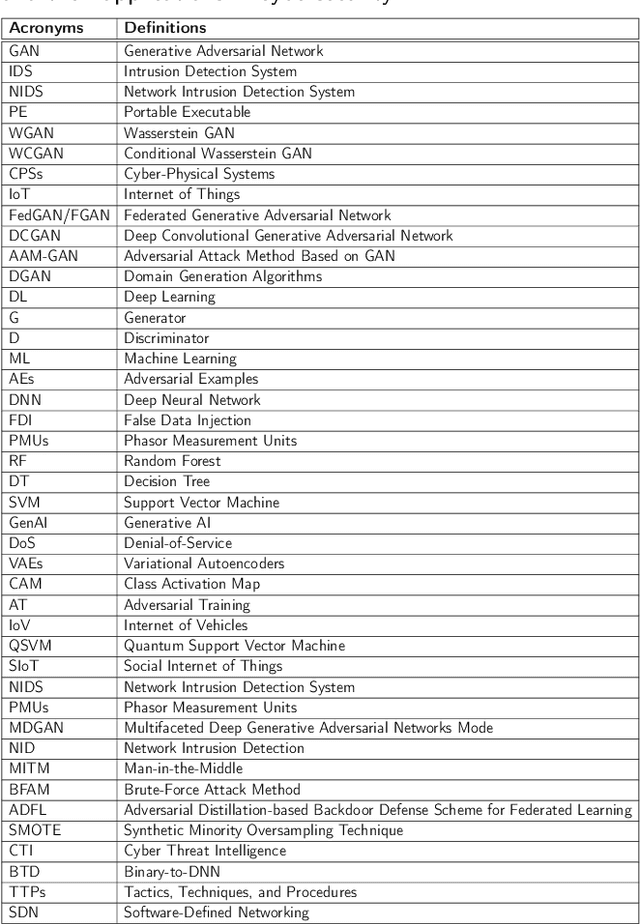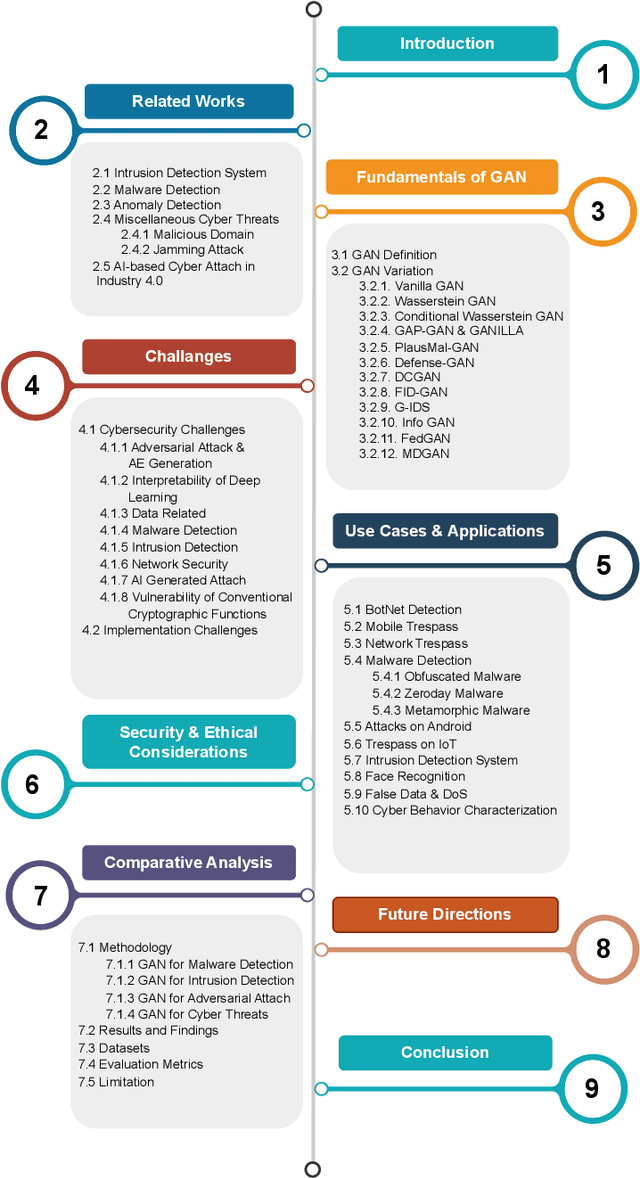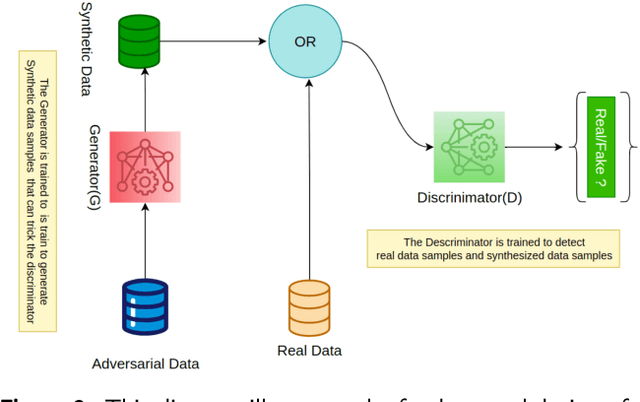Md Shoaib Ahmed
A Survey on the Application of Generative Adversarial Networks in Cybersecurity: Prospective, Direction and Open Research Scopes
Jul 11, 2024



Abstract:With the proliferation of Artificial Intelligence, there has been a massive increase in the amount of data required to be accumulated and disseminated digitally. As the data are available online in digital landscapes with complex and sophisticated infrastructures, it is crucial to implement various defense mechanisms based on cybersecurity. Generative Adversarial Networks (GANs), which are deep learning models, have emerged as powerful solutions for addressing the constantly changing security issues. This survey studies the significance of the deep learning model, precisely on GANs, in strengthening cybersecurity defenses. Our survey aims to explore the various works completed in GANs, such as Intrusion Detection Systems (IDS), Mobile and Network Trespass, BotNet Detection, and Malware Detection. The focus is to examine how GANs can be influential tools to strengthen cybersecurity defenses in these domains. Further, the paper discusses the challenges and constraints of using GANs in these areas and suggests future research directions. Overall, the paper highlights the potential of GANs in enhancing cybersecurity measures and addresses the need for further exploration in this field.
Fish Disease Detection Using Image Based Machine Learning Technique in Aquaculture
May 09, 2021Abstract:Fish diseases in aquaculture constitute a significant hazard to nutriment security. Identification of infected fishes in aquaculture remains challenging to find out at the early stage due to the dearth of necessary infrastructure. The identification of infected fish timely is an obligatory step to thwart from spreading disease. In this work, we want to find out the salmon fish disease in aquaculture, as salmon aquaculture is the fastest-growing food production system globally, accounting for 70 percent (2.5 million tons) of the market. In the alliance of flawless image processing and machine learning mechanism, we identify the infected fishes caused by the various pathogen. This work divides into two portions. In the rudimentary portion, image pre-processing and segmentation have been applied to reduce noise and exaggerate the image, respectively. In the second portion, we extract the involved features to classify the diseases with the help of the Support Vector Machine (SVM) algorithm of machine learning with a kernel function. The processed images of the first portion have passed through this (SVM) model. Then we harmonize a comprehensive experiment with the proposed combination of techniques on the salmon fish image dataset used to examine the fish disease. We have conveyed this work on a novel dataset compromising with and without image augmentation. The results have bought a judgment of our applied SVM performs notably with 91.42 and 94.12 percent of accuracy, respectively, with and without augmentation.
 Add to Chrome
Add to Chrome Add to Firefox
Add to Firefox Add to Edge
Add to Edge